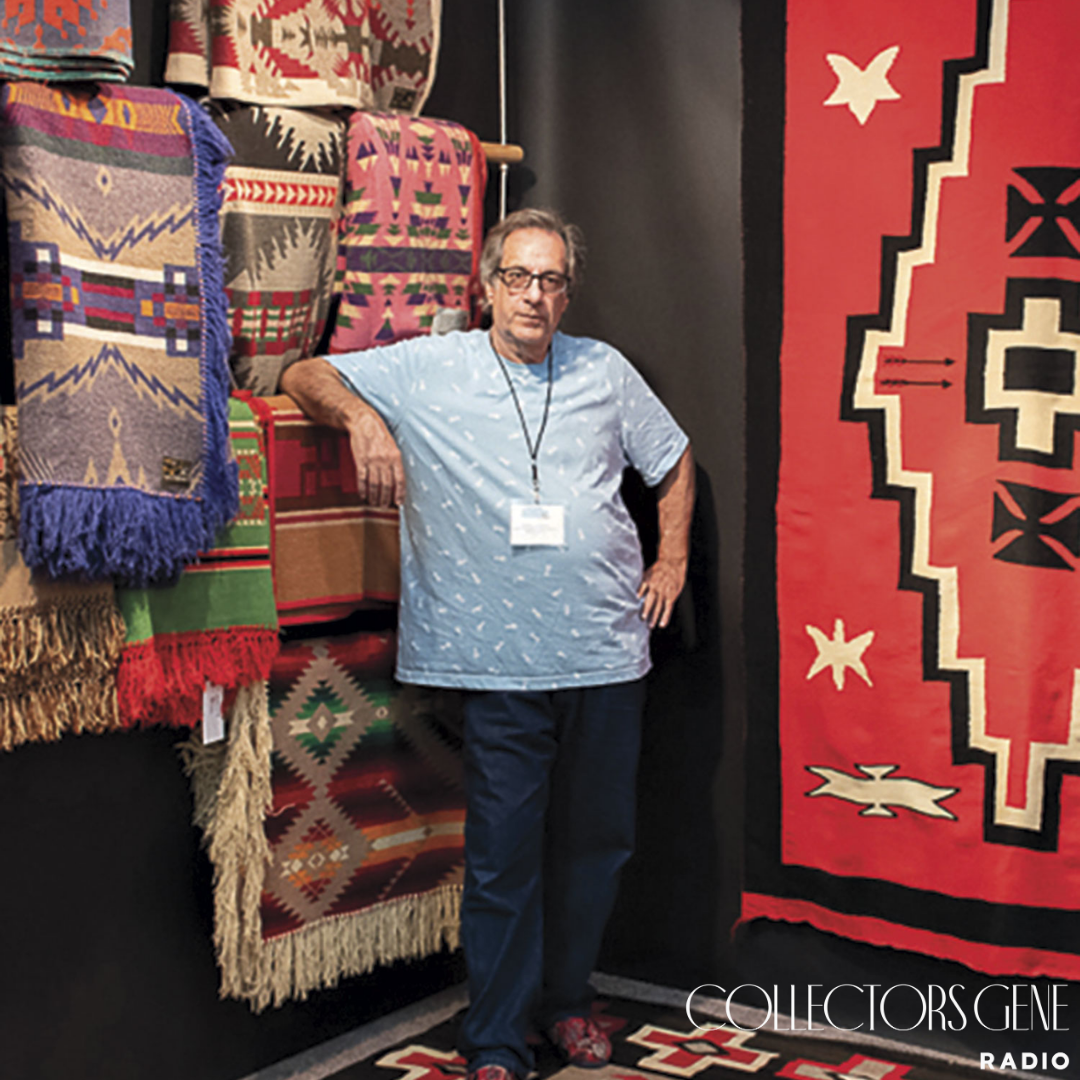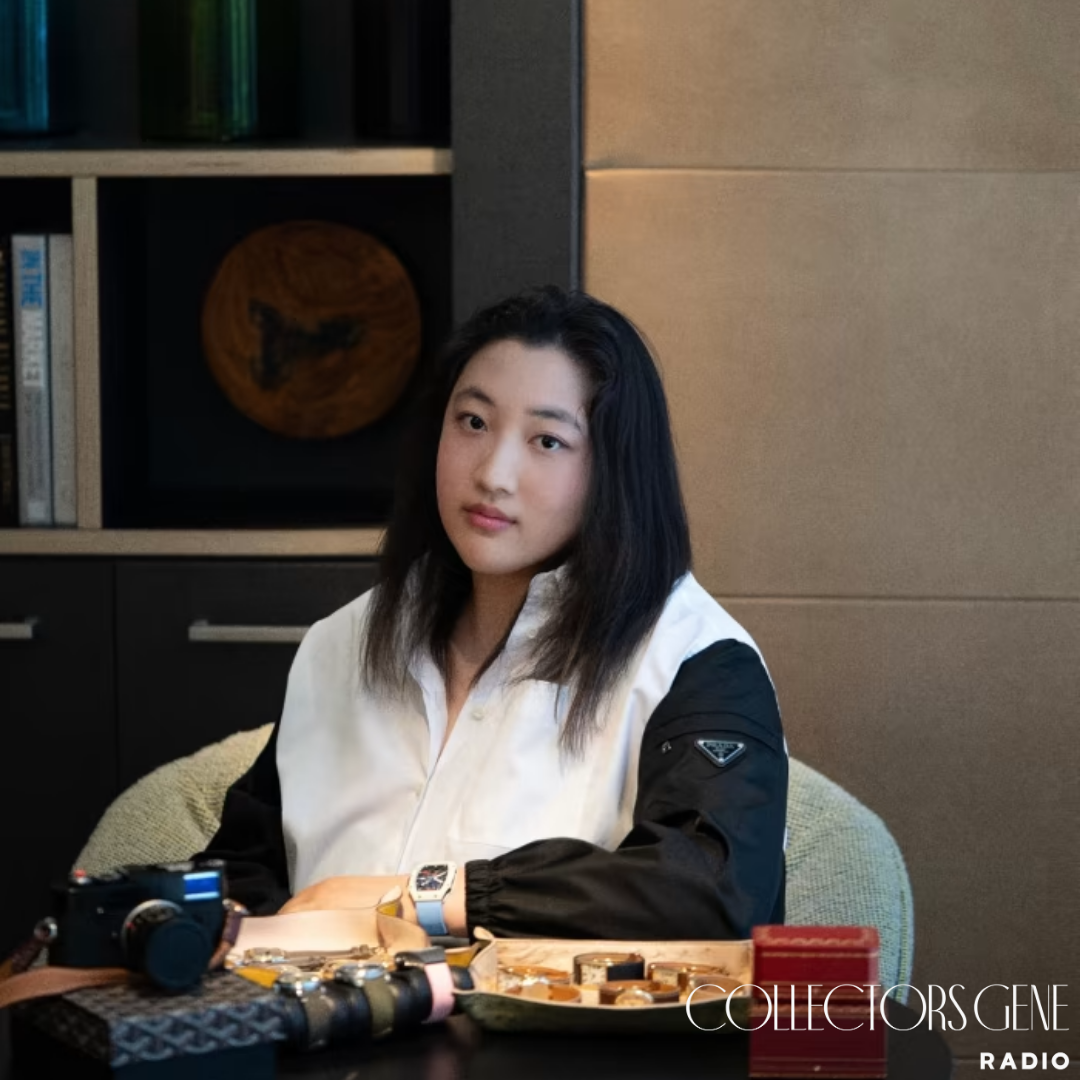For more than fifty years, Barry Friedman has been chasing rainbows, wool rainbows woven into the bold, geometric patterns of antique Native American trade blankets. A former comedy writer turned full-time dealer, Barry is the world’s foremost expert in a niche so specific that he’s essentially the only one dedicated to it at this scale. His journey fits perfectly into the spirit of Collectors Gene: a passion that starts as curiosity, expands into obsession, and becomes both livelihood and legacy.
When I sat down with Barry, we talked about the nuances of this world, how he became Ralph Lauren’s go-to source for blankets, and why sixty of his pieces are about to appear in Martin Scorsese’s Killers of the Flower Moon.
From Comedy to Collecting
Barry began his career writing jokes for television, but on the side, he was slowly piecing together a new path. Since 1969, he’s been buying, selling, and documenting wool blankets manufactured between 1892 and 1942 by mills like Capps in Illinois and Pendleton in Oregon.
Here’s what most people misunderstand: these blankets were not made by Native Americans. They were produced by mills and distributed to reservations through licensed traders. The Navajo, who traditionally wove lightweight blankets, quickly adopted these heavier, brightly patterned versions for everyday use.
The golden age ended in 1942, when Pendleton was conscripted to produce uniforms for the war effort. Today, Pendleton still makes blankets, but collectors chase the originals. The pieces that are so bold they resemble modernist art, and so scarce that finding one intact feels like striking gold.
Working With Pendleton
Over time, even Pendleton lost track of its own history. Fires, turnover, and decades of production changes left gaps in their archive. That’s where Barry stepped in.
As Pendleton’s vintage consultant, he helped rediscover forgotten designs and provided originals for reproduction. One of his finds, the Silver Bark pattern, originally called Aspen from around 1910, became a breakout hit in their Tribute series.
Dating pieces is rarely an exact science. Catalogs provide rough windows, but precise years are guesswork. Distinguishing originals from reproductions, Barry explained, comes down to training the eye. “It’s like classic cars. A replica might look close, but it’s worth pennies compared to the real thing.”
From Ralph Lauren to Scorsese
Collectors at the highest level always find their specialists. Ralph Lauren’s fabled Colorado ranch and Double RL stores around the world are filled with blankets sourced by Barry. While he doesn’t deal directly with Ralph, he works closely with Lauren’s longtime buyer, Doug Bihlmaier. If you’ve ever walked into Double RL and seen a stack of vibrant trade blankets, you’ve seen Barry’s influence.
Hollywood has called on him too. For Killers of the Flower Moon, Scorsese’s team bought sixty authentic 1920s Osage-style blankets directly from Barry. He guided them toward the right patterns and palettes, ensuring accuracy in every frame. After filming, he encouraged the crew to donate the blankets to the Osage museum, a gesture that shows his commitment to history over commerce.
A Dealer at Heart
At his peak, Barry owned over 1,200 blankets. Tuition bills eventually prompted him to sell most, shifting fully into dealing. Today, he keeps sixteen in his office, more out of habit than obsession.
Condition matters most to him. Rarity has little value if a piece isn’t pristine. “A Ferrari that’s been in a head-on collision is still a Ferrari,” he said, “but it’s scrap.” His clients know his standards and expect nothing less.
Barry also works with camp blankets, the cotton cousins of trade blankets, sold through department stores in the early 20th century. Less expensive but equally bold in design, they were the go-to accessory for kids heading to summer camp, and today they’re appreciated for their graphic punch.
Preserving and Documenting
For Barry, preservation is as important as dealing. He’s written two books, Chasing Rainbows and Still Chasing Rainbows, documenting hundreds of examples with detailed photography. His first book is now collectible in its own right. Currently, he’s revising Chasing Rainbows, expanding it from 300 to nearly 500 pages, a project that might become his definitive contribution to the field.
Caring for blankets is another subject where he’s particular. Moths are the enemy, and cedar chests are mostly myth. Only freshly cut cedar repels insects, he explained. Storage in clean, dry conditions is essential, and cleaning should be handled by rug specialists who know how to dry wool without shrinking it.
The Collectors Gene Rundown
The One That Got Away: Blankets he’s only glimpsed in period catalogs. Knowing they were once produced but never finding one in person has haunted him for decades.
The On Deck Circle: The expanded edition of Chasing Rainbows. Beyond writing, he admits that unexpected calls still keep the hunt alive. Sometimes a blanket surfaces in an attic or estate sale, reigniting his excitement.
The Unobtainable: Patterns that may no longer exist at all. For Barry, the holy grail isn’t necessarily the most expensive piece, but the one history has erased.
The Page One Re-Write: If blankets hadn’t consumed his life, he would have gone after art. Competing at the billionaire level appeals to his sense of challenge.
The GOAT: He credits mentors like Mark Winter of Toadlena Trading Post and Mark Sublette of Medicine Man Gallery for shaping his knowledge and deepening the field.
The Hunt or The Ownership: The hunt, always. Selling feels like a necessary trade-off, but discovery is where the adrenaline comes.
Do You Feel That You Were Born With The Collector’s Gene?: Without hesitation. He laughs that he’ll fill any space he’s given, but behind the humor is recognition of a lifelong compulsion.
Closing Thoughts
Barry Friedman may be the only person who can turn antique blankets into a decades-long career, but what he’s really done is safeguard a piece of cultural history. From Ralph Lauren’s stores to Scorsese’s film sets, his influence stretches far beyond the world of wool and pattern.
He calls himself “toxic,” hopelessly infected with the collector’s compulsion. I’d call him indispensable, a steward ensuring that an overlooked corner of design history continues to be studied, appreciated, and passed down.





